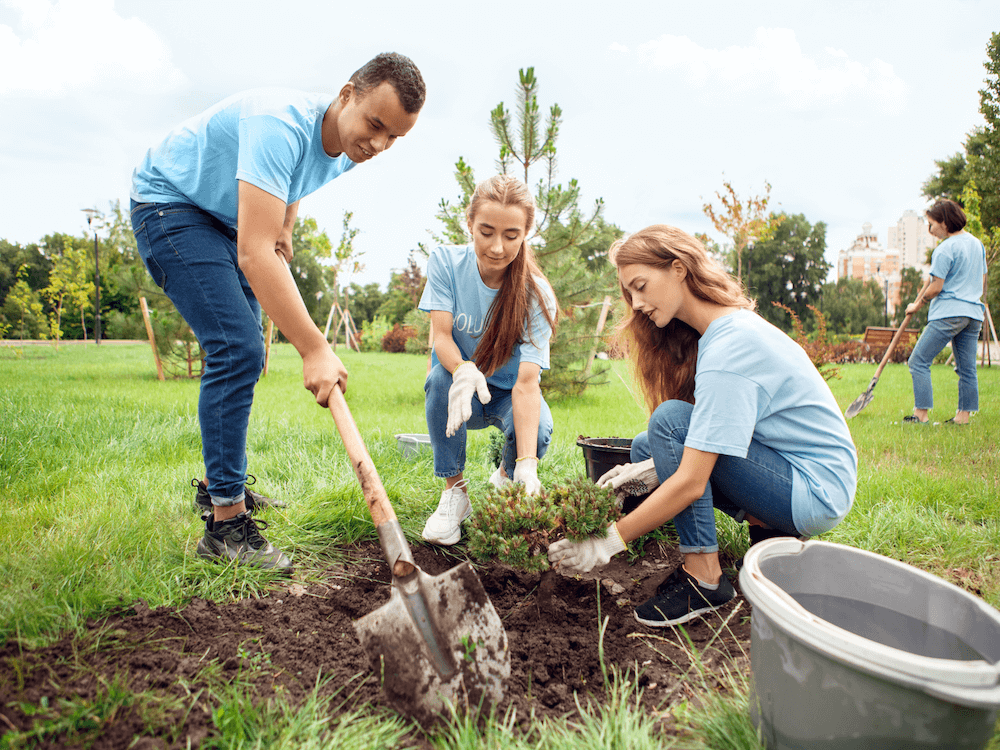As life gradually returned to normal following the pandemic, schools across the country began navigating the post-pandemic landscape and the fallout of the widespread disruptions. Young people returned to the classroom with learning losses, increased mental health issues, and atrophied social and emotional skills. As a result of all these factors, schools everywhere experienced a sharp rise in disciplinary issues.
South River Public Schools, a district in central New Jersey, was no different. But what was different was the district’s commitment to finding an innovative and constructive approach to its disciplinary interventions. Spearheaded by district superintendent Sylvia Zircher — and in partnership with Effective School Solutions (ESS) — in the fall of 2022 the district’s middle school and high school launched a program called Restorative Community Service.
Re-thinking Discipline in South River Public Schools
South River is a small district of about 2,500 students across its four schools: primary, elementary, middle, and high school. The disciplinary problems the district encounters among its middle school and high school students are typical of many districts: bullying, fighting, disrespecting authority, vandalizing school property, vaping on campus. Even for nonviolent infractions, the usual disciplinary measure had been suspension or in-school suspension, a response that Zircher says she has never been a fan of. “I’ve rarely found it to be effective,” she says. The district was interested in trying something different. Inspired by research on alternative programs in the juvenile criminal justice system, Zircher wanted to implement a more positive disciplinary approach that would encourage and reinforce feelings of community and belonging among students and discourage repeat offenses. As a result, the district replaced suspensions with community service hours in a program called Restorative Community Service (RCS).
In its earliest days, the initiative was informal; students who had committed infractions were assigned activities around the school building such as reading with a younger student or helping to shelve books in the library. But soon Zircher wanted to expand the program and give it more structure. Above all, she wanted to ensure that students had a way to prepare before engaging in their service and to process and discuss the experience after they’d completed it. “Just doing the community service without having any sort of reflection opportunity wasn’t going to have enough impact,” Zircher says.
This focus on students’ feelings and experience is a central component of RCS, which seeks to highlight the difference between how students feel when they disrupt their community in comparison to how they feel when they make a positive contribution to it. Helping students recognize and appreciate this difference can lead them to make more constructive choices in the future.
Partnering with Effective School Solutions
In 2022, the district sought ESS’s help in developing and expanding their RCS program.
South River was already working with ESS; since 2020, ESS had been providing Tier 2 clinical services to the district’s middle and high school students. (Tier 2 services address the needs of students with mild to moderate mental health challenges.)
In the planning stages, Zircher and ESS agreed that the program needed a single, dedicated ESS clinician who had no responsibilities other than managing the RCS program. The clinician would hold both pre-service and post-service sessions with the students, serve as a liaison with the administration and with the community, and help find additional sites in the community where students could provide their hours of service. Zircher says, “I think if we hadn’t set it up this way, we probably wouldn’t have had the type of success that we’ve seen in a very short period of time.”
Restorative Community Service: How It Works
Beginning in the fall of 2022, Restorative Community Service became the district’s preferred response to non-violent infractions committed by middle school and high school students — offenses which would previously have resulted in either full suspension or in-school suspension. These transgressions include harassment, bullying, disrespecting authority, vandalizing school property, verbal fighting, stealing, recording videos without consent, smoking marijuana, and vaping, among others. (Violent infractions are not eligible for the program; students who have committed a violent offense require other types of responses and interventions.)
Once a student has committed an infraction, the ESS clinician and the assistant principal jointly decide how many hours of service to assign as a consequence — generally somewhere between two and ten hours, though in some cases more — based on the severity of the violation as well as the students’ life circumstances. The sites where students perform their service are both out in the community (at a food bank, a senior center, a community garden, a beauty salon, and police department mentoring) as well as at school (helping in the library, maintaining areas in and around the school building, and working in “Ram Runway,” (a room at the high school where free clothing is made available to students and other members of the community).
Before students begin their service activity, they meet with the ESS clinician to discuss their infraction and to prepare for their hours of service. For most students, this is the first time they’ve ever engaged in any kind of community service, so the clinician and the student discuss how to behave out in the community, how they can make an impact, and how they can get the most out of their service. The ESS clinician often makes herself available evenings or on weekends so that students have support if needed when they’re at the site. Then, once the hours of service have been completed, students have another meeting with the clinician to talk about the experience: How did it feel? Who did they impact? Who did they help? What does their contribution mean for their community? How can students take this experience back into their life?
The Results
The RCS program has been active less than a year, but already the district considers it a resounding success, and the program has been written into their code of conduct. So far, 46 students at the middle school and high school have taken part in RCS. Zircher says there have been no repeat infractions, and suspensions for minor infractions at both schools are down by 21.3%. Although the program is still new, there has been buy-in from everyone involved. Parents would much rather see their kids engaged in community service than suspended, she notes. Most teachers, too, have embraced the program. They’re satisfied that the violation has been acknowledged and is being adequately addressed. Student response so far has been varied, but most are on board.”
Perhaps nothing says more about the potential power of the program than the fact that some students have actually asked for more service hours once they’ve completed their assignment. Zircher notes, “These might be kids who sometimes get in trouble and are known for disrespect, but now, in this scenario, someone is appreciating them and saying ‘Thank you so much for doing such a good job. Thank you.’ Now they’re receiving positive recognition, and they want more of it. They sense that community service is a place they can feel good about themselves. The program has yielded additional, unforeseen benefits. Through the one-on-one discussions, the ESS clinician may learn that a student is grappling with more serious mental health issues and can refer the student to ESS for more extensive services. Other important information also comes out in these conversations. These interactions help South River connect students with community services that families and caregivers may not know about.
“I’ve always thought of community service as an approach to empower kids and make them feel like they have a purpose in their school and their community,” Zircher says. Through its partnership with ESS, South River is charting a new course in disciplinary intervention that seeks to give students an increased sense of connection, community, and belonging.




